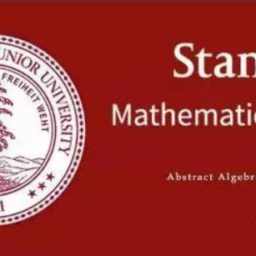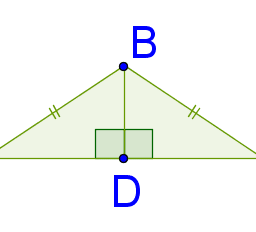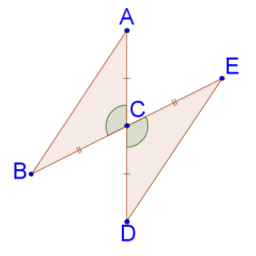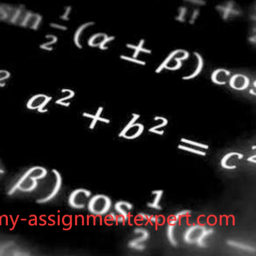| This happens if $2 x-1>2$ or if $2 x-1<-2$. Thus the solution is $x>3 / 2$ or $x<-1 / 2 .$ Written in terms of intervals this is $\left(\frac{3}{2}, \infty\right) \cup\left(-\infty,-\frac{1}{2}\right)$. Example 2.4.17 Solve $|x+1|=|2 x-2|$ There are two ways this can happen. It could be the case that $x+1=2 x-2$ in which case $x=3$ or alternatively, $x+1=2-2 x$ in which case $x=1 / 3$. Example 2.4.18 Solve $|x+1| \leq|2 x-2|$ In order to keep track of what is happening, it is a very good idea to graph the two relations, $y=|x+1|$ and $y=|2 x-2|$ on the same set of coordinate axes. This is not a hard job. $|x+1|=x+1$ when $x>-1$ and $|x+1|=-1-x$ when $x \leq-1$. Therefore, it is not hard to draw its graph. Similar considerations apply to the other relation. Functions and their graphs are discussed formally later but I assume the reader has seen these things. The result is Equality holds exactly when $x=3$ or $x=\frac{1}{3}$ as in the preceding example. Consider $x$ between $\frac{1}{3}$ and 3 . You can see these values of $x$ do not solve the inequality. For example $x=1$ does not work. Therefore, $\left(\frac{1}{3}, 3\right)$ must be excluded. The values of $x$ larger than 3 do not produce equality so either $|x+1|<|2 x-2|$ for these points or $|2 x-2|<|x+1|$ for these points. Checking examples, you see the first of the two cases is the one which holds. Therefore, $[3, \infty)$ is included. Similar reasoning obtains $\left(-\infty, \frac{1}{3}\right]$. It follows the solution set to this inequality is $\left(-\infty, \frac{1}{3}\right] \cup[3, \infty)$. Example 2.4.19 Suppose $\varepsilon>0$ is a given positive number. Obtasn a number, $\delta>0$, such that if $|x-1|<\delta$, then $\left|x^{2}-1\right|<\varepsilon .$ First of all, note $\left|x^{2}-1\right|=|x-1||x+1| \leq(|x|+1)|x-1| .$ Now if $|x-1|<1$, it follows $|x|<2$ and so for $|x-1|<1,\left|x^{2}-1\right|<3|x-1|$. Now let $\delta=\min \left(1, \frac{\pi}{3}\right)$. This notation means to take the minimum of the two numbers, 1 and $\frac{2}{3}$. Then if $|x-1|<\delta,\left|x^{2}-1\right|<3|x-1|<3 \frac{\varepsilon}{3}=\varepsilon$. 2.5 Exercises Solve $(3 x+2)(x-3) \leq 0$. Solve $(x-1)(2 x+1)>2$. Solve $(3 x+2)(x-3)>0$. Solve $x^{2}-2 x \leq 0$. Solve $\frac{x+2}{3 x-2}<0$. Solve $(x+2)(x-2)^{2} \leq 0$. Solve $\frac{x+1}{x+3}<1$. Solve $\frac{3 x-4}{x^{2}+2 x+2} \geq 0$. Solve $(x-1)(2 x+1) \leq 2$. Solve $\frac{3 x+9}{x^{2}+2 x+1} \geq 1$. Solve $\frac{z^{2}+2 x+1}{3 z+7}<1$. Describe the set of numbers, $a$ such Solve $|x+1|=|2 x-3|$. that there is no solution to $|x+1|=$ $4-|x+a|$ Solve $|x+1|=|2 x-3|$. Solve $|3 x+1|<8$. Give your answer Suppose $0b^{-1}$. in terms of intervals on the real line. Sketch on the number line the solu- 25 . Show that if $|x-6|<1$, then $|x|<$ tion to the inequality $|x-3|>2$. $7 .$ Sketch on the number line the solu- Suppose $|x-8|<2$. How large can tion to the inequality $|x-3|<2$. $|x-5|$ be? Show $|x|=\sqrt{x^{2}}$. Obtain a number, $\delta>0$, such that if Solve $|x+2|<|3 x-3|$. $|x-1|<\delta$, then $\left|x^{2}-1\right|<1 / 10 .$ Tell when equality holds in the trian- Obtain a number, $\delta>0$, such that if gle inequality. $|x-4|<\delta$, then $|\sqrt{x}-2|<1 / 10$ Solve $|x+2| \leq 8+|2 x-4|$. Suppose $\varepsilon>0$ is a given positive Solve $(x+1)(2 x-2) x \geq 0$. number. Obtain a number, $\delta>$ 0 , such that if $|x-1|<\delta$, then Solve $\frac{x+3}{2 x+1}>1$. $|\sqrt{x}-1|<\varepsilon .$ Hint: This $\delta$ will de- Solve $\frac{x+2}{3 x+1}>2$. pend in some way on $\varepsilon$. You need to tell how. $2.6$ The Binomial Theorem Consider the following problem: You have the integers $S_{n}={1,2, \cdots, n}$ and $k$ is an integer no larger than $n$. How many ways are there to fill $k$ slots with these integers starting from left to right if whenever an integer from $S_{n}$ has been used, it cannot be re used in any succoeding slot? This number is known as permutations of $n$ things taken $k$ at a time and is denoted by $P(n, k)$. It is easy to figure it out. There are $n$ choices for the first slot. For each choice for the fist slot, there remain $n-1$ choices for the second slot. Thus there are $n(n-1)$ ways to fill the first two slots. Now there remain $n-2$ ways to fill the third. Thus there are $n(n-1)(n-2)$ ways to fill the first three slots. Continuing this way, you see there are $$ P(n, k)=n(n-1)(n-2) \cdots(n-k+1) $$ ways to do this. Now define for $k$ a positive integer, $k ! \equiv k(k-1)(k-2) \cdots 1,0 ! \equiv 1$. This is called $k$ factorial. Thus $P(k, k)=k !$ and you should verify that $P(n, k)=\frac{n !}{(n-k) !}$. Now consider the number of ways of selecting a set of $k$ different numbers from $S_{n}$. For each set of $k$ numbers there are $P(k, k)=k !$ ways of listing these numbers in order. Therefore, denoting by $\left(\begin{array}{l}n \ k\end{array}\right)$ the number of ways of selecting a set of $k$ numbers from $S_{n}$, it must be the case that $$ \left(\begin{array}{c} n \ k \end{array}\right) k !=P(n, k)=\frac{n !}{(n-k) !} $$ Therefore, $\left(\begin{array}{c}n \ k\end{array}\right)=\frac{n !}{k !(n-k) !}$. How many ways are there to seloct no numbers from $S_{n}$ ? |


real analysis代写analysis 2, analysis 3请认准UprivateTA™. UprivateTA™为您的留学生涯保驾护航。
代写
隐藏







